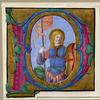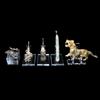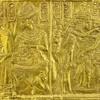Apollo Galleries' Nov. 21 Ancient Art & Antiquities Auction will feature medieval, Greek & Viking helmets; Chinese Shang Dynasty vessel, rare Egyptian ibis sculpture
- LONDON, United Kingdom
- /
- November 17, 2021
LONDON – After 10 years as a recognized leader in the field of ancient art and antiquities, London’s Pax Romana has rebranded as Apollo Galleries. Adopting the name of the Greek god of the sun – and everything under the sun, including art, knowledge, music, poetry and truth – Apollo Galleries hopes to be every bit as multifaceted in its worldly domain as Apollo was in his divine realm. Secured by a deep investment in its future, the company has expanded its elegant two-floor gallery directly opposite The British Museum, increased its roster of managers and expert consultants; installed new scientific equipment for in-house object analysis, and launched new divisions, including Ancient Interiors and Wearable Ancient Jewellery. The firm will be hosting regular events and lectures, and producing informative videos while also hosting a year-round slate of exceptional specialty auctions.
On Sunday, November 21, Apollo Galleries will present a 331-lot Ancient Art & Antiquities Auction, with online bidding through LiveAuctioneers, that takes collectors on a virtual journey through the most important cultures of the past. The fully curated boutique selection features museum-quality art and relics from the intriguing civilizations of the Indus Valley through the Viking Age and Crusader Era.
Since the Egyptian Battle of Mediggo in 1479 BC – the first armed conflict recorded by eyewitnesses – history has been plagued by one war after another. Scholars are especially interested in the armaments used in battles throughout the centuries, as they create a tangible timeline of technological progress. In the November sale, collectors will find an outstanding array of swords, spear-, mace- and axeheads; and even curious Byzantine pottery “Greek fire” grenades.
Helmets are always in great demand. Among the sale’s most interesting – and beautiful – examples is an Ancient Greek Chalcidian bronze helmet de-embossed with the “Horns of Zeus Ammon.” Dating to circa 500-300 BC, its style suggests it may have been worn by a soldier who fought under Alexander the Great. Auction estimate: £10,000-£20,000. A rare Viking-Age Spangenhelm iron helmet comprised of four curved triangular plates with outer supportive bands, was made circa 900-1100 AD and could reach £6,000-£9,000 at auction. Perhaps the most unusual design elements are seen on a rare bronze medieval helmet which is conical in shape and topped by a flared finial. Such helmets were used by the Anglo-Saxons, Franks and Slavs through the 10th century. Its pre-sale estimate is £40,000-£60,000.
The Ancient Egyptian category includes dozens of tantalizing possibilities. A sculptural gilt wood and bronze ibis, circa 664-32 BC (Late Period to Ptolemaic Period), is of a type that was sometimes formed as a coffin to hold a sacrificed, mummified ibis. With a long trail of provenance, this particularly attractive artwork is expected to reach £10,000-£20,000. A gesso and painted cedar wood sarcophagus mask, circa 1069-332 BC (Third Intermediate Period to Late Period), has distinctive carved and painted facial features, including mesmerizing oversize eyes and eyebrows, a prominent nose and a gentle smile. Estimate £2,000-£3,000
Also worthy of special note is an outstanding pair of Ancient Roman bronze and iron fittings, each comprising a spiral fluted column with an iron rod projecting from and Ionic-variant capital surmounted by a bust of Bacchus wearing a goat pelt. Formerly sold at Christie’s New York (Dec. 5, 2012), the pair is offered with a £30,000-£60,000 estimate.
Many significant dynasties are represented in the assemblage of Ancient Chinese art. A sampling shows a Shang Dynasty bronze tripod vessel, £20,000-£40,000; a Tang Dynasty seated Bodhisattva marble torso, £20,000-£40,000; and a number of popular Tang and Han Dynasty terracotta animals (e.g., horses, camels, fowl) and human figures. A Han Dynasty hollow-form terracotta rhinoceros, circa 202-220 AD, displays an appealing color palette of cream overall with subtly rose-hued ears. TL-tested at the independent Ralf Kotalla laboratory in Germany, it comes to auction with a £6,000-£9,000 estimate.
The exquisite artistry of Gandharan sculptures is showcased in 11 lots that range from an iconic circa 100-500 AD stucco lion, £1,000-£2,000; to enlightened Buddhist figures and even a circa 200-400 AD “ganika,” or courtesan, £2,000-£3,000. At the upper end of the grouping, pricewise, are a circa 400-500 AD seated Bodhisattva Maitreya and a circa 100-300AD schist narrative relief depicting sequential scenes from the life of Buddha. Each is estimated at £10,000-£20,000. In a league of its own is a circa 200-300 AD grey chlorite-schist statue of Prince Siddhartha Gautama meditating beneath the Jambu tree. Similar to an example in the collection of The Metropolitan Museum of Art, it could achieve £20,000-£40,000.
Wearable ancient jewellery remains one of the fastest-growing categories in Apollo Galleries' sales, prompting the company’s launch of a dedicated department for the specialty.
With holiday shopping in mind, bidders will want to pay close attention to the spectacular assortment of Viking, Roman and Bronze Age rings, bracelets, pendants and necklaces, many of which are set with precious or semiprecious stones in high-karat gold. One of the many highlights is an XRF-tested medieval gold twisted ring with an emerald stone, circa 1300 AD and possibly Byzantine, that comes from a London collection formed in the 1990s. Estimate: £6,000-£9,000
Apollo Galleries is a member of the British Numismatic Trading Association (BNTA) and the Art Loss Register (AR). The company ships worldwide, and all packing is handled by white-glove specialists in-house.
The November 21, 2021 auction will commence at 9 a.m. US Eastern time/2 p.m. UK time. View the fully illustrated auction catalogue and sign up to bid absentee or live online via LiveAuctioneers. Questions: call Apollo Galleries, London, on +44 7424 994167 or email info@apollogalleries.com. Online www.apollogalleries.com
Contact:
Dr. Ivan Bonchev, OwnerApollo Galleries
+44 7424 994167
info@apollogalleries.com
25 Bury Place
London, United Kingdom
info@apollogalleries.com
+44 7424 994167
http://www.apollogalleries.com
About Apollo Galleries
Aptly named after the god of light, art & knowledge, Apollo brings you the ancient past through antiquities and numismatics. Founded by Dr. Ivan Bonchev in 2010, Apollo encompasses all aspects of collecting and appreciating ancient art, antiquities and coins. Our specialities include: Ancient Roman, Greek, Asian, Egyptian, Medieval, Viking and Neolithic. Our main gallery, based in Bloomsbury, Central London, offers an expertly curated selection of pieces from throughout history. Here we welcome visitors from all over the world to view and learn about our work in person and through upcoming special events and lectures. Our complete gallery collection is also available In a similar spirit, our auction house regularly offers new catalogs to a large international audience of collectors. Every piece we deal undergoes vetting from an expert panel of consultants, and many are also scientifically tested. You can view our upcoming auctions, and learn how to bid here. Previously known as Pax Romana, in 10 short years we have grown considerably. With a 20,000 strong client database we are internationally recognised, with clients from over 70 countries. We also assist in the maintenance of collections for clients old and new, and we welcome the consignment of antiquities for both our gallery and auctions.











__Buffalo_Hunt100x100_c.jpg)



